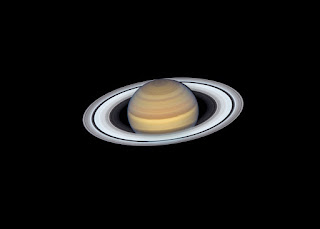Image Credit: NASA, ESA, A. Simon (GSFC), M.H. Wong (University of California, Berkeley) and the OPAL Team
Composed primarily of hydrogen and helium, this enormous sphere is encircled by an impressive collection of over 120 known moons. These moons, including Enceladus with its water jets and Titan with its methane lakes, offer some of the most intriguing landscapes within our solar system. The Saturnian system remains a goldmine of scientific exploration, brimming with enigmas waiting to be unraveled.
When astronomers refer to Saturn being 'in opposition,' they mean that the ringed planet will align opposite the Sun in relation to Earth. This event is set to occur on August 27, 2023, when Saturn will be at its closest approach to Earth—approximately 1.2 billion kilometers away. On this night, Saturn will be visible for the entire night, rising in the east shortly after sunset.
Observing Saturn during its opposition is an awe-inspiring experience. The planet will reach peak brightness on August 27, rising around 8:30 p.m. in the east, followed by Jupiter at around 10:45 p.m. (Italian local time, and may vary depending on the horizon's clarity). Both planets will be discernible to the naked eye; however, using a small telescope will enhance the viewing experience, revealing the mesmerizing rings of Jupiter and its four Galilean satellites.


Post a Comment